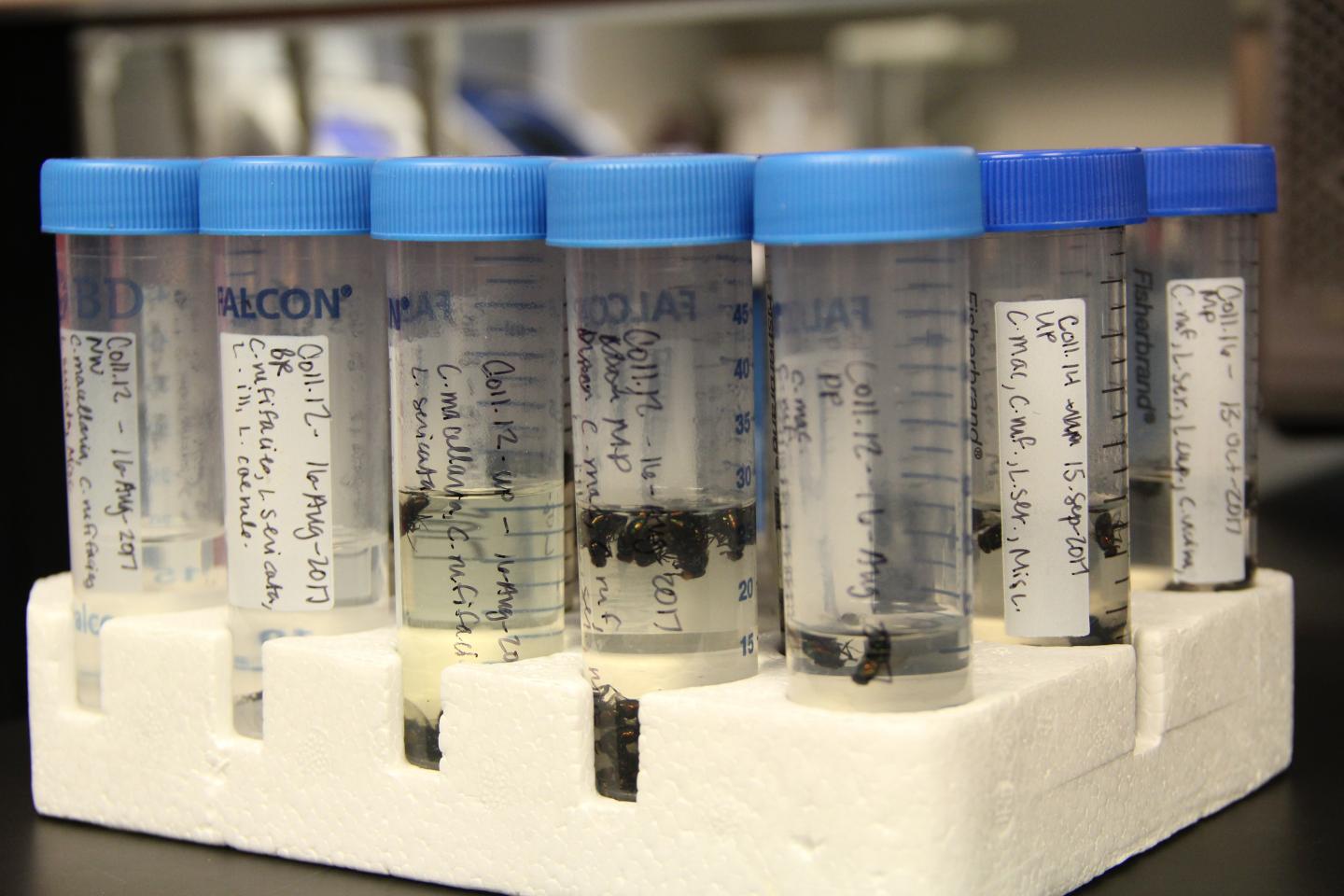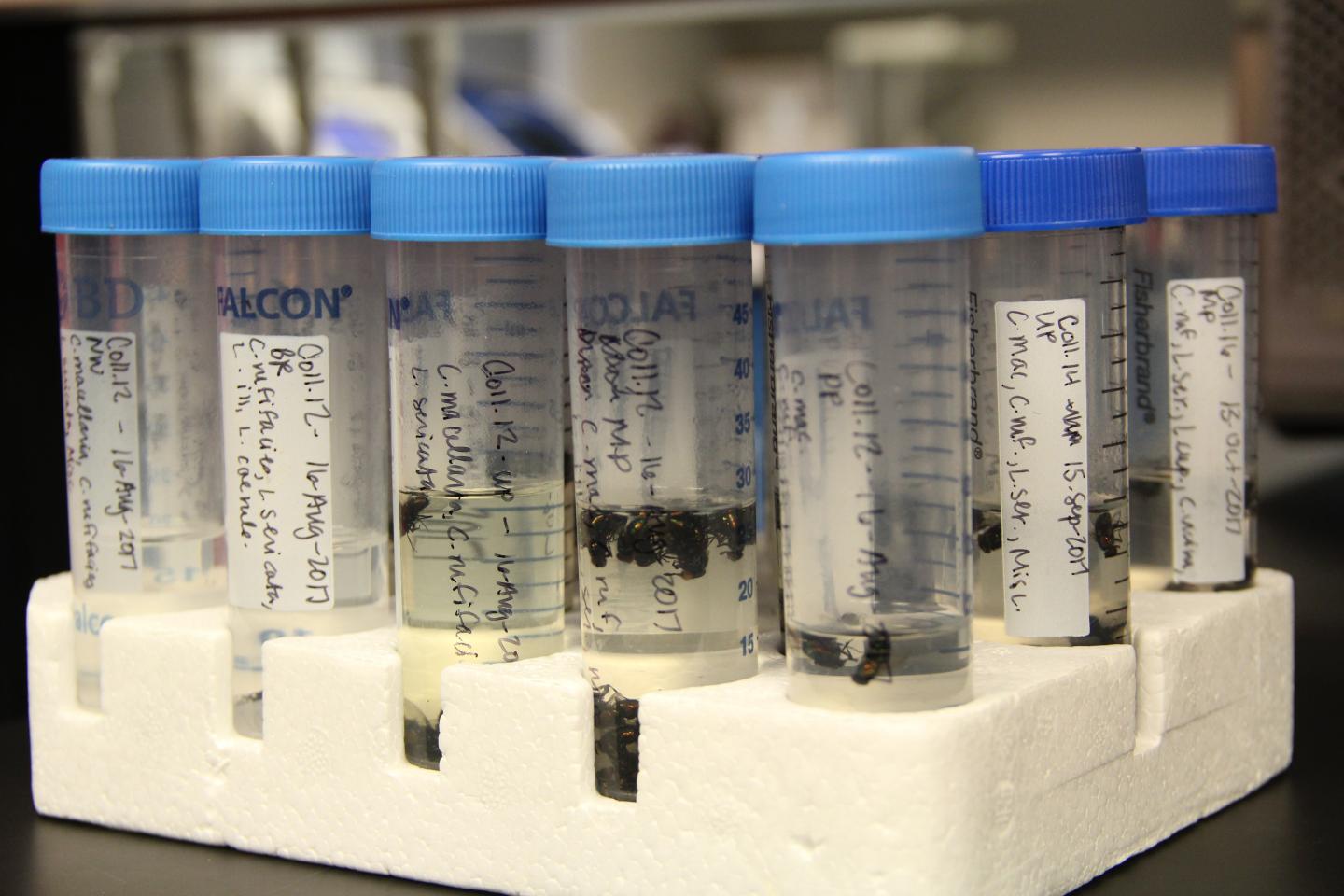
Credit: School of Science, IUPUI
INDIANAPOLIS — Determining whether blow flies have consumed animal fecal material versus animal tissue has important implications for both human public health and animal conservation. A recent study by researchers in biology and chemistry at the School of Science at IUPUI shows how that determination can be made.
"Imagine looking at farming operations that produce a lot of feces and being able to determine just how far from those farms flies are transmitting potentially harmful bacteria obtained from feces," said Christine J. Picard, assistant professor of biology and associate director of the School of Science's Investigative and Forensic Sciences program. "We can determine this using blow flies; they are very easy to catch, and now they can be easily analyzed for fecal bacteria, like E. coli, that may impact human public health."
The flies can now also be used to determine animal diversity and changes in that diversity. Conservationists can gain a better understanding of the number and distribution of animals in a certain environment by analyzing the fecal matter local flies are ingesting.
This newly accessible information also enables researchers to determine which animals are most prevalent in certain areas. Significantly, the study's findings provide conservationists with a powerful tool to detect species changes in an environment before animals become endangered.
"Chemical Assay for the Detection of Vertebrate Fecal Metabolites in Adult Blow Flies (Diptera: Calliphoridae)" is published in Environmental Entomology. The co-authors, all of whom are with IUPUI, are Charity G. Owings, Christine Skaggs, Winyu Sheriff, Nicholas Manicke and Christine J. Picard.
In the study, Picard and colleagues report that analysis by liquid chromatography-tandem mass spectrometry can allow researchers to detect fecal metabolites in the blow fly digestive tract. Prior to this study, when analyzing fly gut contents, scientists had been unable to determine whether flies had consumed vertebrate fecal matter or dead vertebrate tissue.
"This is an important finding not only so we can learn more about blow fly behavior when they are not on carcasses, but also how blow flies fit within our own communities," said Picard. "Typically, it has been very difficult to tell what bacteria the flies are carrying."
The IUPUI researchers separated flies into three groups: one unfed, one exposed to beef liver tissue and one exposed to vertebrate feces. Using liquid chromatography-tandem mass spectrometry, the researchers discovered traces of urilobinoids in only the guts of the flies exposed to vertebrate feces. Urobilinoids, or the byproduct of the breakdown of red blood cells, are only found in fecal matter and were not observed in the unfed flies or in the flies that were fed beef liver.
Previous lab experiments had shown pathogen transmission from fecal matter by flies, but without observing flies ingesting waste, there had been no way to confirm that it is how pathogens are spread. Being able to detect fecal matter in fly guts proves the mechanical transmission of pathogens.
###
Funds for this work were provided, in part, by a Research Support Funds Grant from the Office of the Vice Chancellor for Research at IUPUI, as well as through start up funds from the School of Science at IUPUI.
The School of Science at IUPUI is committed to excellence in teaching, research and service in the biological, physical, computational, behavioral and mathematical sciences. The school is dedicated to being a leading resource for interdisciplinary research and science education in support of Indiana's effort to expand and diversify its economy.
Media Contact
Lauren Kay
[email protected]
http://science.iupui.edu/
Related Journal Article
http://dx.doi.org/10.1093/ee/nvy027




